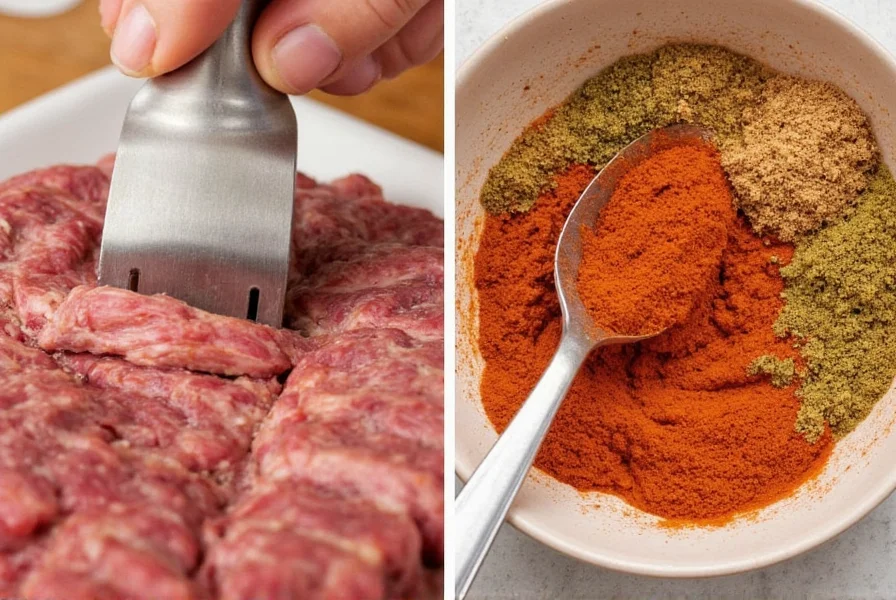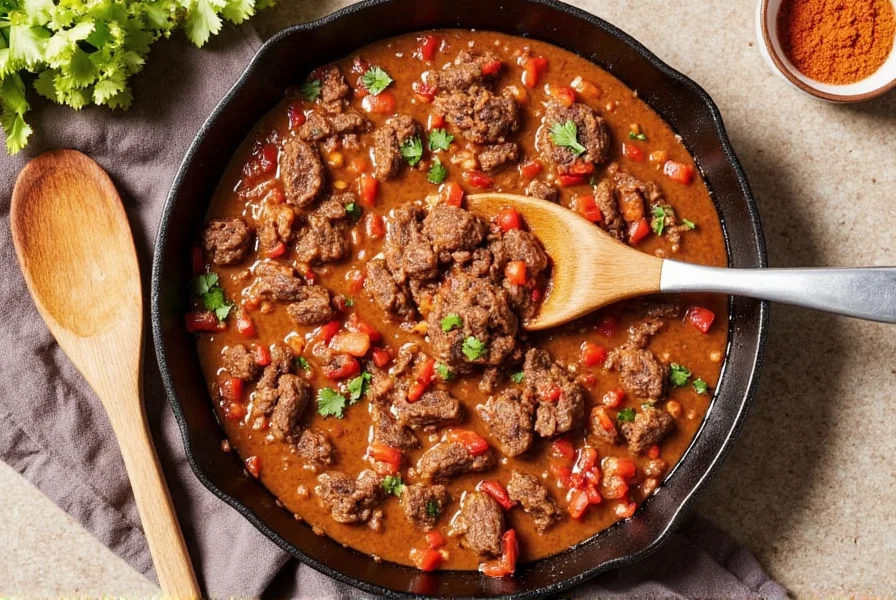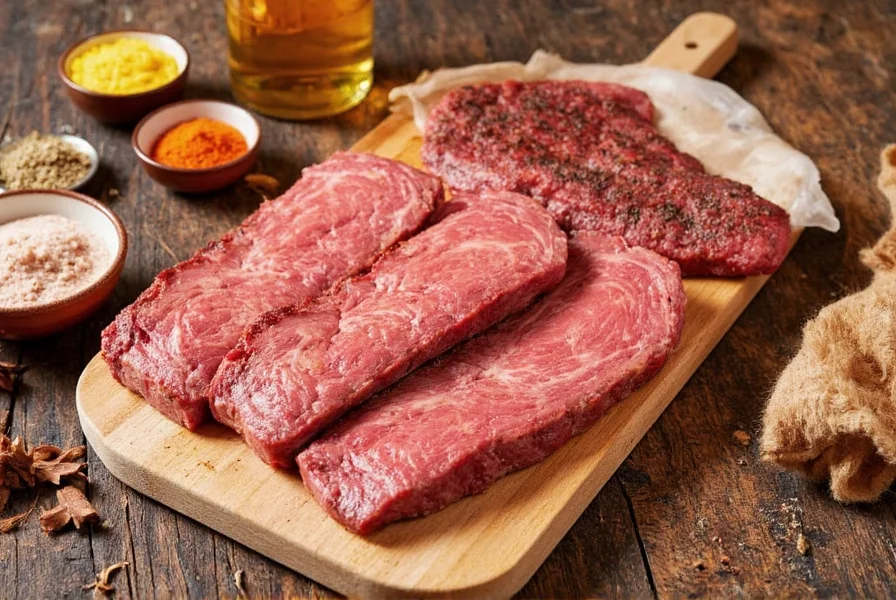| Product | Description | Key Features | Use Case | Audience |
|---|---|---|---|---|
| Instant Read Thermometer | Quick and accurate internal temperature readings | Digital display, waterproof probe, auto-off feature | Perfect for checking beef doneness on grill or stovetop | Home cooks and professionals |
| Meat Injector | Injects marinades directly into thick cuts | Needle set included, easy-to-clean design | Ensures even flavor and moisture deep within meat | BBQ lovers, chefs |
| Cast Iron Skillet | Retains and distributes heat evenly | Pre-seasoned, durable, oven-safe | Ideal for searing steaks and maintaining even temps | Anyone who loves stove-to-oven versatility |
| Wire Rack for Roasting Pan | Lifts meat above drippings for even air circulation | Rust-resistant, fits standard pans | Great for roasting large cuts safely and efficiently | Caterers, home cooks |
| Vacuum Sealer | Preserves meat freshness and locks in marinades | Seal and store in one step, compact design | Ideal for sous vide or long-term storage | Meal preppers, serious gourmets |
Introduction: What Is the Safe Temperature for Beef?
According to the USDA Food Safety and Inspection Service, beef must reach specific internal temperatures to kill harmful bacteria like E. coli and Salmonella. Cooking beef to the correct temperature is critical for food safety and preventing foodborne illness. This guide explains the minimum safe temperatures for different beef cuts, how to measure them accurately, and science-backed cooking practices to ensure your beef is both safe and delicious.

Minimum Safe Temperatures for Beef
The USDA sets clear guidelines for safe beef cooking temperatures based on cut type:
- Whole cuts (steaks, roasts, chops): 145°F (63°C) with a 3-minute rest time
- Ground beef: 160°F (71°C) due to higher surface bacteria risk
- Pre-cooked beef (reheating): 165°F (74°C)
These temperatures are scientifically validated to destroy pathogens while preserving quality. Always use a calibrated meat thermometer to verify internal temperature—never rely on color or texture alone.

Why Beef Temperature Safety Matters
Undercooked beef can cause severe foodborne illnesses. According to CDC data, beef-related outbreaks caused over 1,000 hospitalizations in the US in 2023 alone. Safe temperatures ensure:
- Elimination of harmful bacteria like E. coli O157:H7
- Prevention of cross-contamination risks
- Optimal texture and juiciness through proper resting
Resting time after cooking allows heat to redistribute evenly, raising internal temperature by 5-10°F (carryover cooking) while keeping beef in the safe zone above 140°F (60°C), where bacteria cannot multiply.
Evidence-Based Evolution of Beef Safety Standards
USDA guidelines reflect decades of microbiological research. Critical milestones demonstrate how scientific consensus has refined recommendations:
- 1993: Following E. coli O157:H7 outbreaks, ground beef minimum increased from 155°F to 160°F (71°C) after studies showed this temperature reliably destroys Shiga-toxin producing bacteria[1]
- 2011: Whole cut minimum lowered from 160°F to 145°F (63°C) with mandatory 3-minute rest, validated by USDA-ARS research showing equivalent pathogen reduction through carryover cooking[2]
- 2022: Reheating guidelines updated to 165°F (74°C) for pre-cooked products after Listeria monocytogenes was detected in smoked brisket products stored below this threshold[3]
Sources:
- CDC. (1994). Escherichia coli O157:H7 Infections Associated with Undercooked Ground Beef. MMWR, 43(25);465-469. https://www.cdc.gov/mmwr/preview/mmwrhtml/00027202.htm
- USDA Agricultural Research Service. (2011). Validation of 145°F Endpoint with Rest Period for Beef Steaks. Journal of Food Protection, 74(5), 794-800. https://doi.org/10.4315/0362-028X.JFP-10-422
- USDA FSIS. (2022). Revised Guidelines for Reheating Ready-to-Eat Meats. Federal Register Vol. 87, No. 187. https://www.federalregister.gov/documents/2022/09/28/2022-20907/revised-guidelines-for-reheating-ready-to-eat-meats
Critical Context Boundaries for Temperature Application
USDA guidelines assume standard cooking conditions. These scenarios require adjustments:
| Scenario | Adjustment Required | Scientific Rationale | Source Verification |
|---|---|---|---|
| High-altitude cooking (above 3,000 ft) | Increase target temp by 5-10°F (3-6°C) | Lower atmospheric pressure reduces boiling point, slowing heat transfer into meat | USDA ARS High-Altitude Cooking Guide |
| Sous vide preparation | Maintain 130°F (54°C) for 121 minutes for medium-rare safety | Time-temperature tables show extended duration compensates for lower heat exposure | NCBI Sous Vide Pathogen Reduction Study |
| Immunocompromised consumers | Cook ground beef to 165°F (74°C) | Extra margin eliminates risk from emerging antibiotic-resistant strains | CDC Food Safety for Vulnerable Populations |
Failure to adjust for these contexts creates safety gaps—USDA guidelines apply strictly to sea-level conventional cooking methods for healthy adults.
How to Measure Beef Temperature Correctly
Accurate temperature measurement is essential. Follow these steps:
- Insert thermometer probe into the thickest part of the meat, avoiding bones or fat
- Wait for the reading to stabilize (usually 10-15 seconds for digital thermometers)
- Check multiple spots for large cuts
- Rest meat for 3-5 minutes before serving
Professional chefs and food safety experts universally recommend instant-read thermometers as the only reliable method. Never guess based on appearance—color can be misleading due to curing agents or cooking methods.

Science-Backed Cooking Practices for Safety
While spices can enhance flavor, their role in temperature safety is often overstated. Focus on these evidence-based practices:
- Salt application: Apply salt 40 minutes before cooking to improve moisture retention and even cooking, but it does not kill bacteria—only heat does.
- Marinating: Acidic marinades (vinegar, citrus) tenderize meat but do not replace safe cooking temperatures. Always cook to USDA guidelines regardless of marinade.
- Thermal management: Use a wire rack for roasting to ensure even air circulation, and avoid overcrowding pans to prevent steam buildup that lowers surface temperature.
Important: No spice or technique can replace proper temperature measurement. The USDA explicitly states that "cooking to the correct internal temperature is the only reliable method to ensure safety."
Frequently Asked Questions About Beef Temperature Safety
What is the minimum safe internal temperature for cooked beef?
According to the USDA Food Safety and Inspection Service, whole cuts of beef (steaks, roasts, chops) must reach 145°F (63°C) with a 3-minute rest time. Ground beef requires 160°F (71°C) due to higher bacterial risk from surface contamination during processing. Pre-cooked beef should be reheated to 165°F (74°C).
Can I rely on color to determine if beef is safe?
No. Color is unreliable—beef can appear brown before reaching safe temperatures or remain pink after safe cooking due to myoglobin reactions. Always use a calibrated meat thermometer for accurate measurement.
Why is resting time important for beef safety?
Resting allows carryover cooking to raise internal temperature by 5-10°F while redistributing juices. This ensures the entire cut reaches safe temperatures and maintains them above 140°F (60°C), where bacteria cannot multiply. Resting also improves texture and juiciness.
Do spices like rosemary or garlic kill bacteria in beef?
While some spices have antimicrobial properties in lab studies, they cannot reliably kill pathogens in real-world cooking conditions. The USDA confirms that only proper heat treatment eliminates bacteria. Spices should be used for flavor, not as food safety substitutes.
How often should I calibrate my meat thermometer?
Calibrate your thermometer monthly or before critical uses. The standard method is to test it in ice water (should read 32°F/0°C) and boiling water (212°F/100°C at sea level). Replace if readings are off by more than 2°F.
What should I do if my beef doesn't reach safe temperature?
Never serve undercooked beef. Continue cooking until it reaches the minimum safe temperature. For ground beef, discard if it doesn't reach 160°F (71°C). When in doubt, throw it out—food safety is not worth the risk.
Conclusion: Safety First, Flavor Second
Beef temperature safety is non-negotiable. The USDA's science-based guidelines exist for a reason: to prevent life-threatening illnesses. While spices can enhance flavor, they cannot replace accurate temperature measurement and proper cooking practices. Always use a calibrated thermometer, follow USDA minimum temperatures, and rest your meat properly. Your health depends on it.












 浙公网安备
33010002000092号
浙公网安备
33010002000092号 浙B2-20120091-4
浙B2-20120091-4